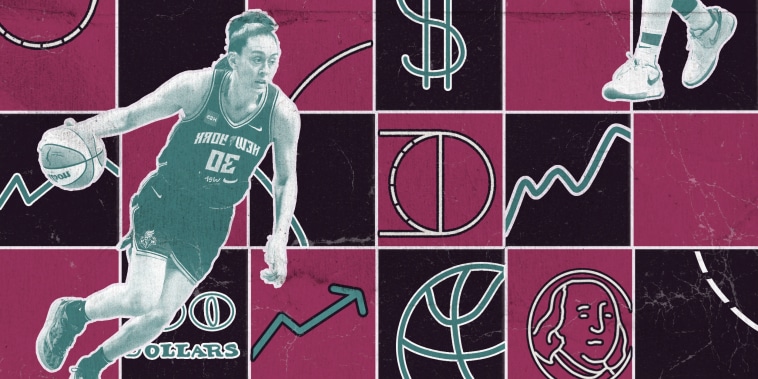Caitlin Clark’s Pro Salary Exposes an Undeniable Economic Reality Separating the WNBA and NBA
In today’s sports landscape, the disparities in pay between male and female athletes are starkly evident despite the strides made towards gender equality in recent years. The recent revelation of Caitlin Clark’s pro salary further highlights the glaring economic disparity that persists between the Women’s National Basketball Association (WNBA) and the National Basketball Association (NBA).
Clark, a standout player from the University of Iowa, signed a lucrative endorsement deal upon entering the WNBA draft, marking a significant milestone in her career. However, what followed was a stark juxtaposition to the multimillion-dollar contracts routinely handed out to NBA rookies. This disparity raises critical questions about the systemic issues that perpetuate unequal pay in professional sports.
One central factor contributing to the gap in earnings between the WNBA and NBA is the stark difference in revenue and media exposure. While the NBA has secured lucrative television deals and sponsorships, propelling the league to new heights of profitability, the WNBA continues to face challenges in capturing a similar level of commercial success. As a result, the revenue generated by the WNBA pales in comparison to the financial juggernaut that is the NBA, leading to substantial differences in player salaries.
The lack of investment and marketing support for the WNBA is another key issue that hinders the league’s ability to compete with its male counterpart in terms of economic viability. Despite the undeniable talent and dedication of WNBA players, the league struggles to attract the same level of corporate sponsorship and fan engagement as the NBA. This disparity in financial backing perpetuates a cycle of lower wages and limited opportunities for female athletes in professional basketball.
Furthermore, societal attitudes towards women in sports play a significant role in perpetuating the economic gap between the WNBA and NBA. Deep-seated gender biases and stereotypes continue to influence how female athletes are perceived and valued in comparison to their male counterparts. These biases not only impact the financial rewards available to female athletes but also contribute to the unequal representation and recognition of women’s sports in the media and popular culture.
Addressing the economic disparity between the WNBA and NBA requires a multifaceted approach that involves increasing investment in women’s sports, challenging gender stereotypes, and advocating for greater media visibility for female athletes. Initiatives such as improved broadcasting rights, enhanced marketing strategies, and equal opportunities for endorsement deals can help bridge the gap in economic opportunities between male and female athletes.
In conclusion, Caitlin Clark’s pro salary serves as a poignant reminder of the economic realities that continue to separate the WNBA and NBA. By acknowledging and addressing these disparities, the sports industry can take meaningful steps towards achieving gender equality in professional sports and ensuring that female athletes receive the recognition and compensation they deserve.




























